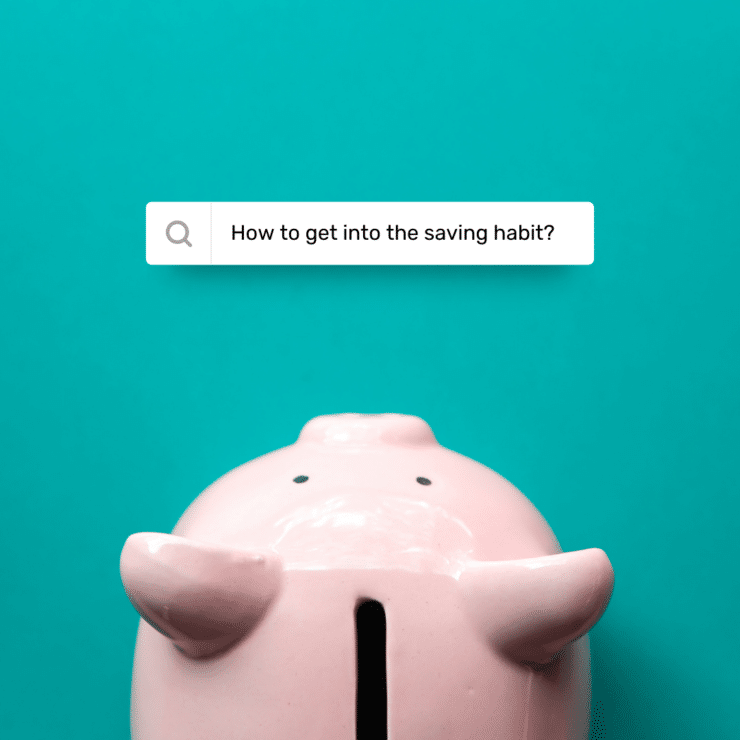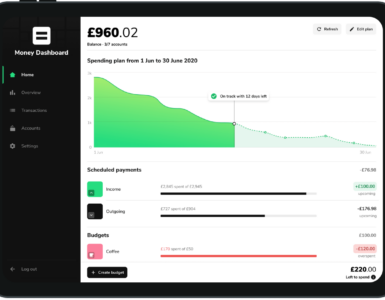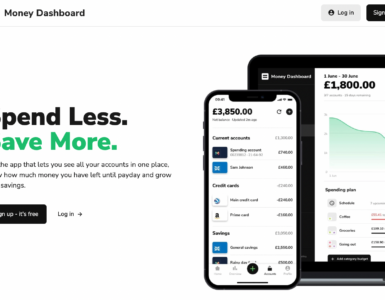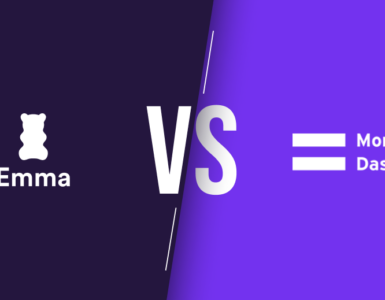With the new year well underway, many people are the full swing of their New Year’s resolutions. These resolutions can be for anything from improving your mood to learning a new language — most are financial in nature, however, and usually involve getting into the habit of saving.
Saving is hard.
No matter your age or income, putting money aside for the future can be a challenge. Some people have trouble cutting back on their spending to set aside funds for savings. Others may have debt that’s standing in their way.
Whatever the case may be, if you’ve been having trouble saving, try these tips to get started:
1) Have a goal.
While it might seem obvious, it’s important to cover the basics first. The process of setting a savings goal helps you better understand your motives. It could be a short-term goal – like setting aside cash for a holiday or buying something special – or longer-term, such as building up an emergency fund or a deposit for your first house. It’s important to not only set a goal but set a due date on when you want to have saved. Having a deadline will help keep you motivated!
2) Pay off costly debts first.
While it may be tempting to get started on your savings journey ASAP, first check to see if the interest rate on your savings account is greater than the interest rate on any debt you may have.
With most interest rates for savings accounts today sitting at under 1% AER, it’s highly likely that the interest rate on your debt is greater. If your debt interest rate is higher, it may make more sense to pay your debt off first before you begin your savings journey otherwise you could pay more than you need to in debt interest.
While most banks/lending providers should have their interest rates easily accessible on their websites, if you can’t find them, reach out to them for further information.
4) Make it automatic
The more manual you make a task, the less likely you’ll stick with it.
While it’s easy to save when you’re motivated, it becomes much harder when your motivation runs out. Make saving money as easy as possible! Don’t rely on your motivation to get to your savings goal.
Most banks have an automatic payment feature that will activate a payment on a day of your choice without you having to do a thing.
Set up an automatic payment to be paid to your savings account as close to when you’re paid as possible. Do it close to your payday so you don’t spend your savings before your automatic payment has gone out.
Making the payment automatic will also make it less likely you’ll notice the money leaving your account; out of sight and out of mind.
Trust us – future you will thank you for it.
5) Get familiar with your spending habits
If you’re the type of person whose heart starts racing when you check your bank statement, this one is for you.
We get it, checking your bank balance can be an unpleasant experience but in the world of savings, ignorance is not bliss.
Not knowing where you’re spending your money can mean money that should be going towards that trip to the Bahamas is instead being spent on a subscription you didn’t even know you had.
You want to get to a point where you know what you’re spending your money on and why. Gone are the days when you look at transactions and have no idea what they’re for! Once you know where you’re spending, you can find ways to cut back on your spending and save more.
If you’ve plucked up the courage and you’re reviewing your spending for the first time, you may find your bank statement overwhelming and confusing so you may not want to start there.
Instead, see your spending clearly by linking your accounts with Emma. Emma will categorise your spending and help point out any subscriptions you’re paying for. You can also view all your spending in one place if you have more than one bank account.
If you still need a little encouragement to make a start, this is it – you got this! The sooner you start, the quicker you can achieve your savings goals.
6) Start small
You may be tempted to jump right into your savings journey and make drastic changes to your spending and savings – after all new year, new you!
While this approach works for some people, it’s not for everyone. Once again, while you may be motivated initially when that motivation runs out you might find the change too drastic and revert to your old ways.
We usually recommend starting small, gaining your confidence and progressively making small changes. By making small changes, you limit any shocks that could take you back to ground zero.
For example, you decide to increase your savings from 5% to 30% of your income. Halfway through the month, however, you find that your bank account is looking low meaning you’re either stuck at home for the rest of the month or you have to overspend. Demotivated, you give up on your savings goal, transfer your savings back to your spending account, feel like you’ve failed and are no closer to achieving your savings goals.
Instead, you could try putting 5% of your income into savings in the first month, 7% the next month and so on. It may take longer to achieve your savings goals but you’ll likely find it easier to adjust, developing much more long term savings habits.
So before you make big changes to your spending or savings habits, chant with us – slow and steady wins the race, slow and steady wins the race…
7) Make it fun
While checking interest rates, setting up automatic payments, starting small is all good and well, it’s a bit boring. After all, we’d know! We’ve spent the last 4 years developing an app to make this less boring.
We know that if you can make managing and saving money more fun, you’ll be more likely to stick to it.
Apart from shamelessly plugging the Emma App, we have a few more suggestions up our sleeves to make your savings journey much more enjoyable.
Here are some ways to make saving money more fun:
- Create a competition with yourself or your friends. For example
- If you can save X amount by X date, you get to buy yourself that new pair of shoes
- Whoever saves X amount the quickest gets taken out for lunch
- Whoever spends the least amount in a week gets coffee bought for them
- If you like to do your savings by keeping a physical piggy bank, have fun by giving your jar a creative makeover. Put an inspirational quote on your jar, make it uber colourful or practice your painting skills and inspire yourself to save more.
- Use a service like IFTTT that links your bank with actions in other banks. For example
- If it rains, put £2 in my rainy day account
- If my balance goes below £20, turn my smart lights to red
- Use your failures to your advantage! Try tying your fitness goals or other goals with your savings goals. Even if you don’t quite make it to one goal, you can work on another goal – a win-win! For example:
- If you spend more than £10 on food in one day, you have to do 10 pushups
- Or if you don’t save £100 this month, you have to give up chocolate for a week
8) Use cashback sites when you buy.
It’s possible to claw back money back on your online shopping in just a few clicks through the use of couponing and cashback sites.
These are a great option if you’re looking to squeeze every penny out of your purchases. If you’re going to spend anyway, you might as well capitalise on the cashback offer.
Cashback is one of Emma’s features and includes more than 150 retailers. You’ll be able to save money at hundreds of retailers across fashion, beauty, food, and tech by using Emma’s cashback feature. 🎉 ⠀
To use the cashback feature:
Step 1: Tap on ‘Cashback’ in the bottom menu.
Step 3: Select the retailer you want to purchase from
Step 4: You’ll be directed to a unique link for that retailer – make your purchase via this link
Step 5: You’re all done! 💵
SUMMARY:
Setting aside funds for the future is something that we all need to do. But if you feel like you’re having trouble putting aside even just a little, try some of these tips to help you get started. Even a little bit of saving can go a long way.







Add comment